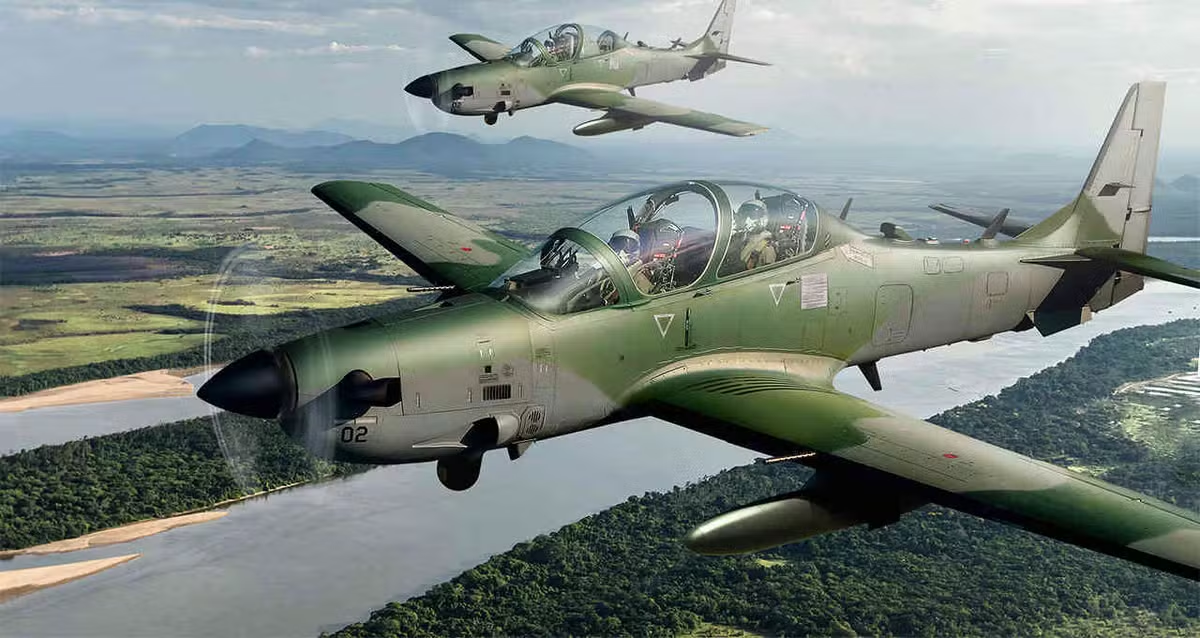
After two decades of dominance in the light attack aircraft market; Embraer Obtained A-29 qualification super tucano A mission typical of our time, viz. drone killerEspecially for European countries concerned about the crisis, war and Russia.
The Brazilian manufacturer announced this week at the Dubai Air Show in the United Arab Emirates that it has included a role in combating unmanned aerial vehicles effectively and cheaply in its turboprop fighter jet’s list of capabilities.
The selling point is simple. Despite being small, the plane can carry enough combat payload for a variety of missions, and shooting down a drone, for example, tends to be more cost-effective with an aircraft that costs less to operate than a state-of-the-art fighter jet.
Europe is the most obvious market, given the current skepticism surrounding Russian drone sightings. There was an actual drone incursion in Poland in September, but the Kremlin claimed it was accidental.
In the incident, a fifth-generation American F-35 fighter jet of the Dutch Air Force shot down a drone that was being used as a decoy without using explosives. AIM-9X missiles are used, and it can cost up to US$500,000 (currently R$2.6 million) to shoot down a Gerbera model, with a price tag of around US$10,000 (R$52,000).
Additionally, an F-35 flight time costs about US$40,000 (R$211,000). The estimated flight time for the Super Tucano is USD 1,500 (R$ 7,900). In terms of armament, the plane is equipped with two .50 machine guns in the wings, allowing it to use laser-guided rockets, which is also an economic advantage.
The main model on the market, the APKWS-2 from British BAE Systems, is a kit that turns a simple rocket into a guided weapon with an autonomous laser guidance system. It costs just over US$20,000 (R$105,000), a fraction of the price of more advanced missiles.
However, there are drawbacks to using Super Tucano. First, because it is a turboprop aircraft, it takes longer to take off and reach a combat zone than a supersonic fighter jet.
Second, it does not carry a powerful radar system, so it can only operate in an environment full of drones with the help of mapping performed by other aircraft.
As for the last question, there is a solution. To be able to sell the Super Tucano to NATO member Portugal, the company equipped the aircraft with state-of-the-art optical and infrared sensors for targeting and the ability to feed data via Link-16, the Western military alliance’s standard encrypted communications system.
The announcement reflects the need for an economic solution to the drone problem, highlighted by the war in Ukraine that began with Russia’s invasion in 2022. The mass production of robot planes is making life difficult for NATO forces, who fear a conflict with Russia by the end of the decade.
For example, after the invasion of Poland, the Alliance created a mission to strengthen the airspace of Eastern Europe, but so far it has provided only superficial answers to this problem, replacing radars and fighter aircraft in operations that are not realistically cost-effective even if they were used.
For Embraer, it’s a niche field. Most likely, it will start with other robot planes guided by artificial intelligence and flown in the form of aerial “minefields”, as Ukraine is testing with French technology, then move on to electromagnetic countermeasures, anti-aircraft batteries, aircraft, and then a layer of protection against drones.
The Super Tucano, along with the Star transport aircraft KC-390, is the flagship product of the São Paulo manufacturer’s defense division. With 60% of the market, 290 aircraft have been purchased or ordered and are operated by 22 air forces, with Brazil being the largest operator with 89 aircraft available.
Of the 600,000 flight hours to date, 10 percent have been spent in combat. The unit price depends on the size of the order and the packages included, but the off-the-shelf price is estimated at US$10 million (R$52 million), but the contract for 12 aircraft with simulators and support to Portugal has doubled that value.



